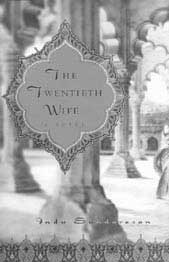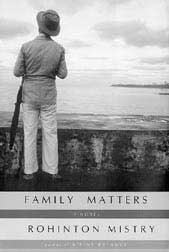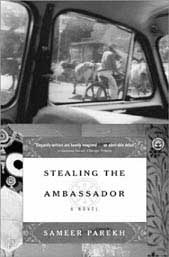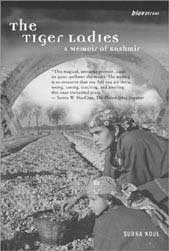Arts
State of the Indian Book

Indian writers are no longer just flash-in-the-pan.
|
Last year, on his first visit to India after winning the Nobel Prize for Literature, V.S. Naipal attended a New Delhi literary festival
organized by the Indian Council of Cultural Relations in his honor. While listening to a discussion between two well-known Indian women writers on the affect of gender oppression on their work, and the negative influence of the English language on regional literature, Sir Vidia once again revealed that he viewed many things Indian with an extremely jaundiced eye and was not afraid of voicing his acerbic opinion. “This thing about colonialism, this thing about gender oppression, the very word oppression wearies me,” he fumed, interrupting the pair of women writers. ” If writers talk about oppression, they don’t do much writing. Fifty years have gone by. What colonialism are you talking about?” Well, his trenchant criticism notwithstanding, colonialism may have departed, but it did thrust upon Indians the legacy of the English language and, whether Sir Vidia likes it or not, it is a mine that is still yielding a rich, varied ore of fiction and non-fiction. A cursory glance at the books published in 2002 prove that writers, whose mother tongues may be Urdu, Parsi, Bengali, Hindi, Telegu or Tamil, brought out fiction and non-fiction written in a language that certainly did not belong to their forefathers. Did these vernacular languages suffer because the writers did not use their mother tongues to flesh their work?
Naturally. But there is also no denying the fact that the English language is immeasurably richer for the presence of these gifted talents. Hinglish, as Indian writing in English is sometimes slangily called, has evolved into a genre of its own, and has transformed itself into a distinct offshoot from its imperial root. Not that books by Indians writing in English is something new, something that just transpired a few years ago. After all, back in 1913, the Bengali poet-writer Rabindranath Tagore did win the Nobel Prize for literature, (becoming incidentally the first non-Westerner to do so in that category) for his collection of poems Gitanjanli, translated from Bengali into English. But by the time V.S. Naipal was bestowed the same prize in 2001, the world of readers were more familiar with the names of Arundhati Roy, Salman Rushdie, Amit Chaudhuri, and a host of others rather than Tagore. Indian writing in English had earned its place in the mainstream, along with the chai served in Starbucks, the payals and bindis on sale at the mall and the Bollywood or Bollywood-inspired movies that keep popping up at the local multi-plex. The output of Indian writers publishing in 2002 starred some well known names and some new ones, all of them tackling a range of subjects that spanned different continents, centuries and events.
There were a sprinkling of new debuts, notably Stealing the Ambassador, by Sameer Parekh; there were some familiar big-name writers, including Chitra Divakaruni, who brought out her novel Vine of Desire, a sequel to her earlier novel, Sister of My Heart; Another well-known name, Salman Rushdie, published a non-fiction set of essays last year called Step Across This Line: Collected Nonfiction 1992-2002; There were some critically acclaimed books, like Canadian-Indian writer, Rohington Mistry’s novel, Family Matters. And then of course there were books whose pre-publishing hype included not just the quality of their literary content but also mentioned the stunning payments that the author had negotiated, among them being of course, Hari Kunzru, who pocketed a staggering advance of £1 million for his first book, a historical novel, The Impressionist. Kunzru’s book also went on to win the Betty Trask Prize, netting him a further earning of some £8,000. Since the goal of this article is not merely to develop a laundry list of names and books of last year’s crop of Indian writing, I shall attempt to winnow down the authors to a smaller group (highly subjective, I might add), whose works caught the eye and entertained the mind.
Foremost among the fiction that was published last year was Mistry’s Family Matters. Although it failed to win its author the coveted Booker prize, this touching, richly woven story of an aging Parsi widower’s last days against the violent, shaky backdrop of Shiv Sena’s Mumbai, is full of unforgettable characters and comic poignancy. In a sense, Mistry’s book was just a continuation of his nuanced, compelling style of writing that was evident from his first published work, a collection of short fiction, Swimming Lessons and other stories from Firozsha Baag. Bharati Mukherjee, on the other hand, has had her ups and downs, and her last book, Leave It To Me, which came out in 1997, got some negative reviews. But in her 2002 novel, Desirable Daughters, Mukherjee proved once again that when it came to evoking the drama of immigrant Indian lives, especially women living in North America caught between old and new worlds, she is at the top of her game. True, Desirable Daughters, has its flaws – an obsession with the Bengali Brahmin way of life, an improbable ending and a thriller -type suspense that is glaringly uneven in parts – but ultimately, her story of three sisters soars. Mukherjee weaves her plot deftly, with humor and biting wit, moving back and forth between continents, to reveal how family secrets can erode the strongest of bonds.
Indu Sundaresan’s debut novel, The Twentieth Wife, is also about an immigrant family, this time set in 17th century India. The daughter of a Persian hrefugee, Mehrunnisa (she went to become the empress Nurjahan, the famed wife of the Mughul emperor, Shahjahan), is chosen to come into Emperor Akbar’s palace as a companion to the queen and soon falls in love with his son, Salim. But the book transcends into more than a romantic, lightweight tale because Sundaresan uses her research to effectively present an entertaining, action-packed story of a young girl’s dream of marrying her prince. Sometimes a book takes you by surprise, slowly dazzling the mind with its understated prose and images. Penguin India publisher David Davidar’s first novel, House of Blue Mangoes, was one such elegant, subtle book. Set in a small town in South India, it skillfully takes the reader into the world of 19th century pre-independent India, using the prism of one man, Solomon Dorai’s, vision of preserving his family and his village’s fortunes in the face of changes that colonialism is ruthlessly ushering into his universe. Davidar’s language is quietly lush, spinning out poetic flashes of rural life but his characters are strong and true to the bone.
Sudha Koul’s Tiger Ladies, A memoir of Kashmir, was one of the most eloquent, and lyrical works of Indian nonfiction to come out last year. A fierce sorrow that the home of her childhood has become one of the most dangerous regions in the world, permeates the soul of Tiger Ladies. But Koul does not indulge in finger-pointing or rhetoric. Instead she looks back nostalgically at the ordinary life of her family during the 1950’s and ’60s, infusing the book with her passion for Kashmir’s natural beauty, its unique folk stories, and peace-loving people. At a time when mismanaged politics has pitched Hindus against Muslims, Koul’s book celebrates their past amity in a way that carries more than a grain of hope for their future. Tanuja Desai Hidier’s book, Born Confused, points to a growing future of fiction by Indians: tales from the viewpoint of second generation Indians, children who have grown up with the taunting label of ABCD (America Born Confused Desi). Hidier’s heroine, a young girl from New Jersey, battles with the angst of living in two cultures, as she tries to build an identity for herself. Although it has its cliched moments, Born Confused is significant because its heroine’s preoccupation with not being Indian or American, is being played out in many different ways inside Indian-American homes. In the end, it seems safe to say that last year’s batch of books prove that Indian writers, living both in and outside their homeland, are alive and well-represented on the world literary bookshelf. Indian writing in English is a niche that is growing numerically each year, and in North America at least, Indian writers are gaining acceptance in a way that has gone far beyond the flash-in-the-pan speed of the usual latest fad.
|








